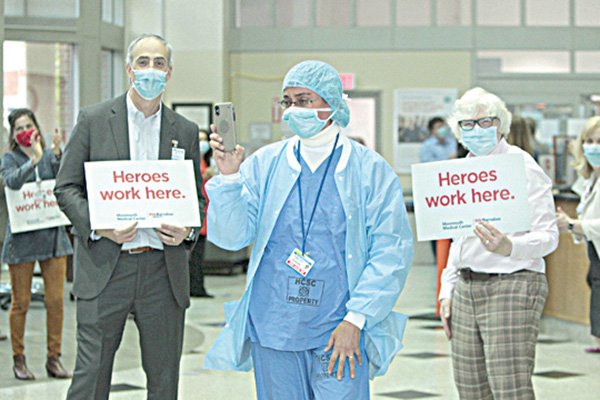
By Allison Perrine
For a while, health care experts thought most children who contracted COVID-19 experienced mild to no symptoms.
That’s still the case for a majority of children. But doctors are now finding some children who appear to be having post-infectious complications from the virus.
According to Meg Fisher, M.D., chair of the Department of Pediatrics at Monmouth Medical Center and medical director at Unterberg Children’s Hospital, the complications seem to arise several weeks after the infection, caused by the child’s immune response.
“As a response to infection you make an antibody. And in this case, that antibody triggers an inflammatory response,” she said. “It’s sort of like your immune system goes berserk and instead of doing what you’d like it to do, which is control the virus, it turns on all your body’s inflammation mechanisms to try to get rid of an agent or a pathogen that in reality is already gone. So, your body is hurting yourself.”
Fisher said she isn’t sure why the complication is happening to some individuals. If she knew, she would get a Nobel Prize, she joked. But doctors do know that there’s a balance between being infected and controlling the infection, and being harmed by the body’s response to the infection.
“Some people have called it an immune dysregulation,” she said.
This is not unique to COVID-19 patients, Fisher said. There are many infectious diseases where the body’s response does more harm than good, like the respiratory syncytial virus which causes children to catch a common cold or viral pneumonia. The difference is, however, that the reaction from COVID-19 is much stronger than expected and can be life-threatening.
Common symptoms seem to be fevers, rashes and red eyes, similar to Kawasaki disease. Some have also had gastrointestinal symptoms and swelling of the hands and feet, but will not usually have swollen lymph glands, Fisher said.
She estimates that there have likely been less than 200 cases of this happening to children, as reported so far, about half of whom come into a hospital with evidence that their hearts are not working as they should be. Similar responses have also been noted in adults as well. Some adults have caught the virus and had it attack their lungs, and about 10 days into their illness they get much sicker.
“It doesn’t seem like it’s the virus at that point, but the body’s reaction,” said Fisher. “Obviously, this will be important for us to figure out because the treatment is going to be different. If the problem is the virus replicating… then you want something that will turn off the virus. If the problem is your body’s reaction, then you need something to downregulate, to turn off your body’s reaction.”
Right now, doctors are treating patients with this immune dysregulation with intravenous gamma globulin, which Fisher described as a blood product from thousands of blood donors with a variety of immune globulins in it. The same treatment is given in Kawasaki disease to turn off the inflammatory response and prevent heart disease, she said.
At the beginning of the pandemic, Monmouth Medical Center had to close its pediatric unit and turn it into an adult intense care unit. They have not been seeing in-patients. They have, however, seen “one or two” of these young patients in the pediatric emergency department who were transferred to Robert Wood Johnson University Hospital New Brunswick for care. RWJ New Brunswick has likely had about 10 cases now, she said.
“What we want parents to know is that this can happen, but it still is very, very unusual,” she added. But, if a child is having high fevers and looks sick, they should go to an emergency department. Fisher advises that parents call their doctors first for advice.
“We take any child who looks sick. We want them to be evaluated. Sometimes the closest or easier place to do that is an emergency room,” she said. “But sometimes if it’s during the day and the pediatrician is available, we’d rather have the pediatrician evaluate them because they know the children and they know the families.”
The article originally appeared in the June 4 – 10, 2020 print edition of The Two River Times.














